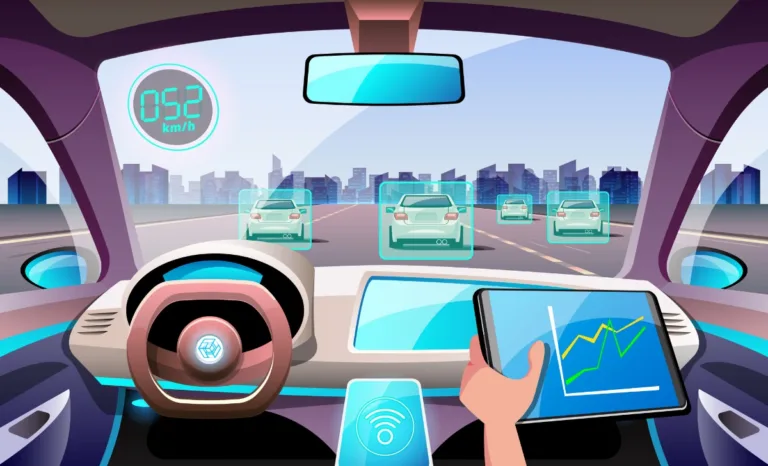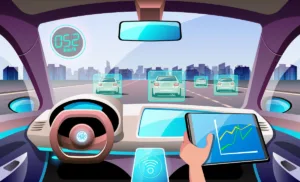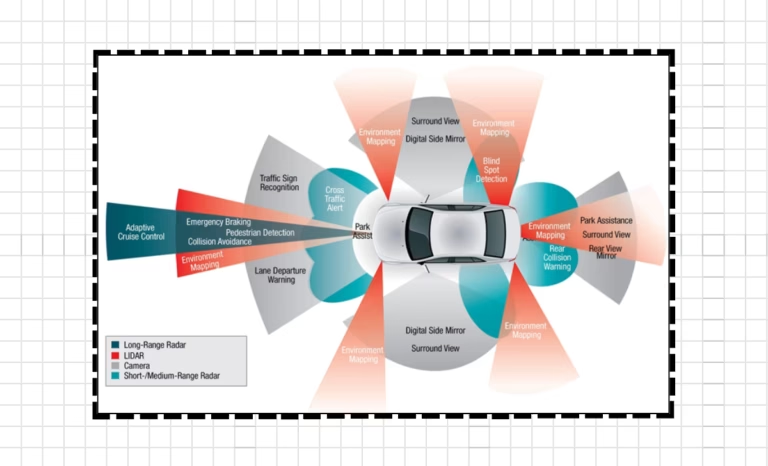
Autonomous vehicles also referred to as self-driving automobiles, have been the subject of debate for a while now. A world where driverless vehicles are the norm is closer than ever thanks to the rapid advancement of technology. But, new technology often brings new difficulties, so understanding how to operate an autonomous vehicle correctly is crucial for a safe and effective trip.
In this article
- 1 In this article
- 2 Understanding Autonomous Vehicle Technology
- 3 Familiarize Yourself with the Autonomous Vehicle’s Features
- 4 Understand the Levels of Autonomous Driving
- 5 Stay up-to-date on Regulations
- 6 Develop Skills in Data Analysis and Machine Learning
- 7 Collaborate with Other Professionals
- 8 Stay up-to-date on Industry Developments
In this article
Understanding Autonomous Vehicle Technology
Understanding the underlying technology is crucial before learning how to operate an autonomous car. To observe their environment and make judgments based on that perception, autonomous cars rely on a range of sensors and technologies.
Radar, lidar, cameras, and GPS are a few of the sensors used in these vehicles, and they all work together to detect and identify things like other cars, people walking along the road, and road signs. A computer analyses the information gathered by these sensors and decides how the car should travel the road based on its analysis.
Familiarize Yourself with the Autonomous Vehicle’s Features
Autonomous vehicles have a variety of features that, like those in conventional vehicles, make them simple to operate and convenient. Before you begin operating an autonomous car, you must get familiar with these aspects.
Some of the features you could find in an autonomous vehicle are adaptive cruise control, which adjusts your speed to keep a safe distance from the car in front of you, and lane departure warning systems, which warn you when you begin to veer off your lane.
Understand the Levels of Autonomous Driving
Based on their level of automation, autonomous vehicles are divided into five categories, with Level 0 signifying complete automation and Level 5 signifying complete automation. Understanding the various stages of autonomous driving is crucial if you want to be sure you are aware of the capabilities of your car and how to drive it safely.
Level 0 – No Automation: At all times, the driver has complete control over the vehicle.
Level 1 – Driver Assistance: The car can help the driver with some tasks, such as stopping or steering, but the driver is still in charge of steering and operating the car.
Level 2 – Partial Automation: Although the vehicle is capable of handling steering and acceleration, the driver is still in charge of keeping an eye on the road and taking control if necessary.
Level 3 – Conditional Automation: Although the vehicle is capable of regulating the majority of aspects of driving, the driver must remain vigilant and prepared to take over in an emergency.
Level 4 – High Automation: The car can drive itself in the majority of scenarios, although in some cases, the driver may still need to take control.
Level 5 – Complete Automation: At this level, there is no need for the driver to take control at any moment because the car can drive itself in every circumstance.
Stay up-to-date on Regulations
When working with autonomous vehicles, regulations, as with any new technology, must be considered. Laws and regulations governing the use of self-driving vehicles differ from country to country, so staying up to date on the latest developments is critical. Some countries, for example, require a human driver to be present in the vehicle at all times, whereas others allow fully autonomous vehicles on public roads.
Develop Skills in Data Analysis and Machine Learning
To make decisions about their driving behavior, autonomous vehicles depend heavily on data analysis and machine learning. Abehaviors a result, developing these skills is critical once working with automated vehicles. Data analysis skills will enable you to comprehend and interpret the massive amounts of data collected by the vehicle’s sensors, whereas machine learning skills will allow you to create and train the algorithms that control the vehicle’s driving behavior.
Collaborate with Other Professionals
Working with self-driving cars necessitates collaboration with other professionals from various fields, such as software developers, data scientists, and engineers. Once working on automated vehicle projects, it is important to form a team with diverse skills and expertise. Collaborating with other professionals will help to ensure that all aspects of the project are taken into account and that the final product is of the highest quality.
Stay up-to-date on Industry Developments
The field of autonomous vehicles has been constantly evolving, so staying up to current with the most recent developments is critical. Attending networking events, trying to read industry articles, and following on social media are all examples of this. Staying up to date on industry developments and trends can help you maintain a competitive edge and identify fresh possibilities for development and innovation.
Continuing to work with autonomous cars can be a complex and challenging endeavor, but you can contribute significantly to this exciting field by developing the necessary skills, staying up to date on industry developments, and effectively collaborating with other professionals.
To get more detail about Self-Driving cars – click on me
Read: How to Choose a Best SUV 8 Buying Steps & 8 step for Choosing the Best Electric Motorbike buying Guide




